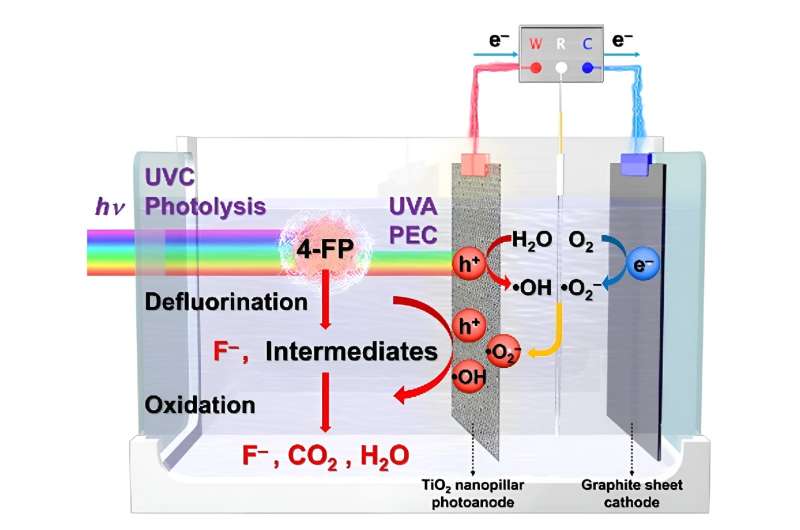This article has been reviewed according to Science X's editorial process and policies. Editors have highlighted the following attributes while ensuring the content's credibility:
fact-checked
trusted source
proofread
A synchronous defluorination-oxidation process for degradation of fluoroarenes with PEC

Fluoroarene (FA) derivatives are receiving more and more attention due to their widespread applications in the synthesis of pharmaceuticals, agrochemicals and organic compounds with special functions. However, as a consequence of their wide applications, the discharged FAs in industrial wastewater cause serious environmental pollution.
The toxicity, persistence, and bioaccumulation of FAs pose considerable risks to ecosystems and human health. For instance, as a typical FA, 4-fluorophenol (4-FP) is recognized as a carcinogen in the registry of toxic effects of chemical substances.
A research team led by Prof. Can Li from Dalian Institute of Chemical Physics, Chinese Academy Sciences, has reported a synchronous defluorination-oxidation process for efficient degradation of FAs with photoelectrocatalysis (PEC). The approach was coupled the photolysis defluorination with •OH-initiated oxidation processes.
The results are published in the Chinese Journal of Catalysis
There are two fundamental challenges needing to be addressed in regard to the degradation of FAs. First, the cleavage of C‒F bonds, which is critical to avoid the formation of toxic or persistent fluorinated byproducts. Second, the complete oxidation of defluorinated intermediates, such as aromatic or aliphatic derivatives, which is essential to enable the remediation of aquatic environment. An efficient process for elimination of FAs must achieve both high defluorination efficiency and high oxidation activity.
Although many efforts have been made to develop degradation methods for FAs, the cleavage of C‒F bonds using electron-deficient oxidants under oxidative conditions is inefficient because of the high electronegativity of fluorine. Besides, the application of reduction defluorination process is limited due to high cost and strict reaction conditions, such as the requirement of noble metal-based catalysts or inert atmosphere. Therefore, it is urgent to develop efficient and eco-friendly technologies for the complete degradation of FAs in wastewater under mild conditions.
In their study, the researchers achieved both efficient defluorination and TOC removal (both over 99.9%) under mild conditions. Their paper describes the scale-up pilot system they designed to demonstrate the deep treatment of FAs for practical application.
More information: Haibo Chi et al, A synchronous defluorination-oxidation process for efficient mineralization of fluoroarenes with photoelectrocatalysis, Chinese Journal of Catalysis (2023). DOI: 10.1016/S1872-2067(23)64559-0
Provided by Chinese Academy of Sciences





















